Weekly wild news from our reserves, 1 April
Hen Reedbeds at dawn - Jamie Smith
Jamie Smith, North Suffolk Warden, was pleased to spot this black redstart at Church Farm this week. The black redstart is a dark, sooty grey with a red tail, and is a rare nesting bird that usually frequents city centres and industrial areas, rather than woodlands.
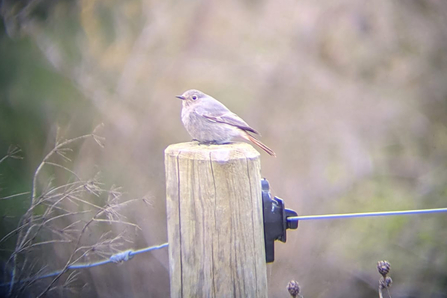
Black redstart at Church Farm – Jamie Smith
Who’s looking at you?
Andrew Excell, Sites Manager, was surprised by a visit from this gorgeous long-tailed tit admiring itself in his wing mirror! The tiny long-tailed tit builds a domed nest out of moss in a bush or the fork of a tree, and camouflages it with cobwebs and lichen. It lines the nest with as many as 1,500 feathers to make it soft for the eight to twelve eggs it lays.
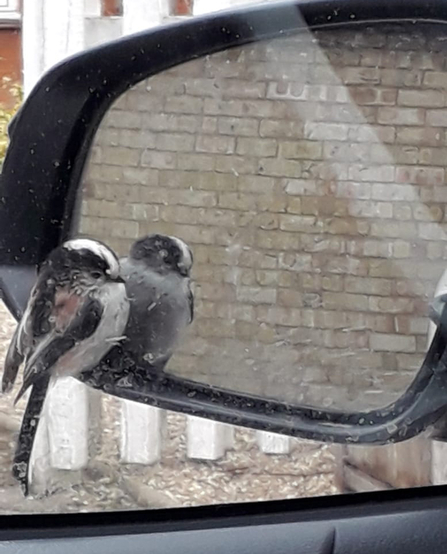
Long-tailed tit – Andrew Excell
Early butterflies
Charlie McMurray, Trimley Marshes Warden, was pleased to report some butterflies on the nature reserve this week – a brimstone and this lovely peacock butterfly sunning itself. Butterflies bask in the sun to warm the blood in tiny capillaries in their wings, allowing for warm blood to be circulated throughout their body.
Ringed curlew at Trimley Marshes
Nigel Odin, volunteer bird recorder, recently spotted a curlew at Trimley Marshes with visible coloured leg rings. On investigating the ring details, he discovered that the bird was ringed as a chick in Holland, and he received this photo of the bird as a chick during ringing. The curlew has undergone massive declines as a breeding species in the UK, with the Breeding Bird Survey indicating significant breeding declines in Scotland, England and Wales, and an overall UK decline of 42 per cent between 1995 and 2008.
Curlews are also declining more widely across their global breeding range and, consequently, their IUCN status is near threatened. The curlew is a UK BAP priority species and is now red-listed as a UK Bird of Conservation Concern. Colour ringing allows people to more easily see birds out in their habitat, pass on the information and enable a better understanding of their survival, productivity and movement.
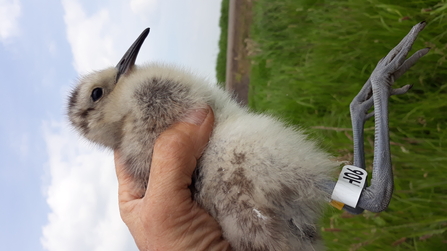
Curlew chick being ringed in Holland - Gerrit Gerritsen
Arger blues!
Joe Bell-Tye, West Suffolk Reserves Warden, spotted a first flowering bluebell at Arger Fen & Spouse’s Vale this week. Joe said ‘Our native bluebell, Hyacinthoides non-scripta, is an early flowering wild hyacinth that naturally occurs in the UK. It appears in ancient woodlands and along woodland edges in April and May. Bluebells spend most of the year underground in a dormant state only emerging to leaf and flower in the spring, growing from bulbs. This early flowering allows them to make the most of the sunlight that strikes the forest floor habitat, before the canopy becomes too thick’. Native bluebells are protected in the UK under the Wildlife and Countryside Act, 1981.
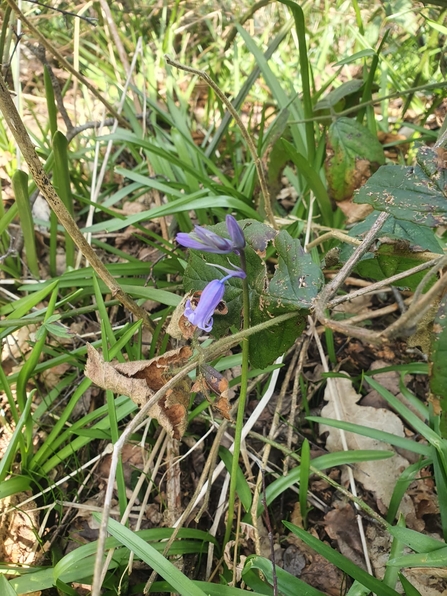
First bluebell at Arger Fen - Joe Bell-Tye
Cow or ox?
Bradfield Woods Warden, Alex Lack has been watching the sleepy emergence of the county flower of Suffolk, the oxlip. ‘This nationally scarce wildflower is confined to the area where Suffolk, Essex and Cambridgeshire meet and prefers well-established woods on East Anglian boulder clay. It appears similar to both primroses and cowslips, being halfway between the two in terms of size. Cowslip flowers, however, are a slightly deeper shade of yellow whilst primroses only have one flower per stalk’.
For many years it was thought that the oxlip was a cowslip/primrose hybrid. It wasn't until 1842 that botanist Henry Doubleday did some breeding tests that suggested they weren't. To double-check he sent some of the seed he'd used to Charles Darwin who tested it himself. When Darwin got similar results, he wrote a paper to confirm Doubleday’s work.
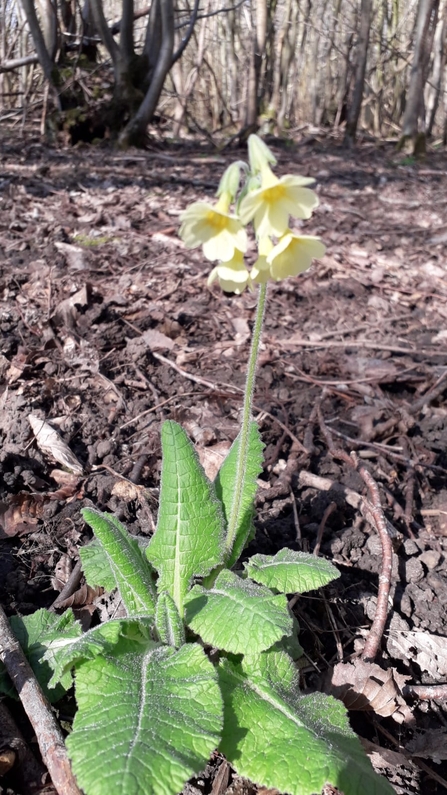
Oxlip at Bradfield Woods - Alex Lack
Andrew Hickinbotham, Lound Lakes Wardens, snapped these gorgeous cowslips flowering at the nature reserve this week. Cowslips brighten up ancient meadows and woodlands with their egg-yolk-yellow, nodding blooms. Formerly a common plant of traditional hay meadows, ancient woodlands and hedgerows, the loss of these habitats has caused a serious decline in its populations and now fields coloured bright yellow with its nodding heads are a rare sight. The name cowslip actually means 'cow-slop' (cowpat), in reference to its choice of meadow habitat.
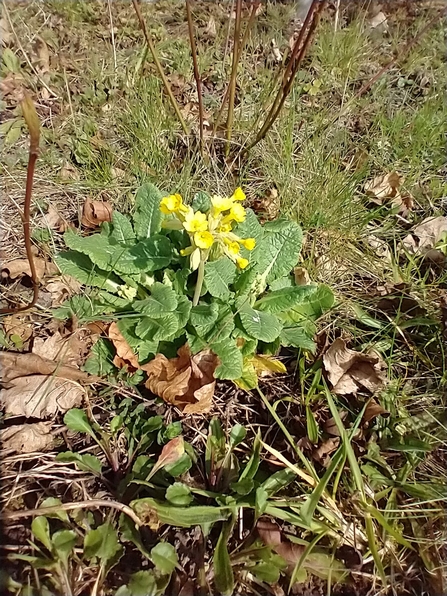
Cowslips at Lound Lakes - Andrew Hickinbotham
Ch...Ch...Cetti
The short burst of sound heard towards the end of this video clip at Hawkers pool, Lackford Lakes, is the distinct call of the Cetti’s warbler (pronounced with a ‘Ch’). Named after 18th century zoologist, Francesco Cetti, the Cetti's warbler is a medium-sized warbler of willow scrub, marshes and nettlebeds. It can be very difficult to spot, but you may well hear it singing loudly from the cover of dense bushes. Resident all year-round, in summer, male Cetti's warblers spend their time defending territories, while the females lay their bright red eggs and raise their chicks.

